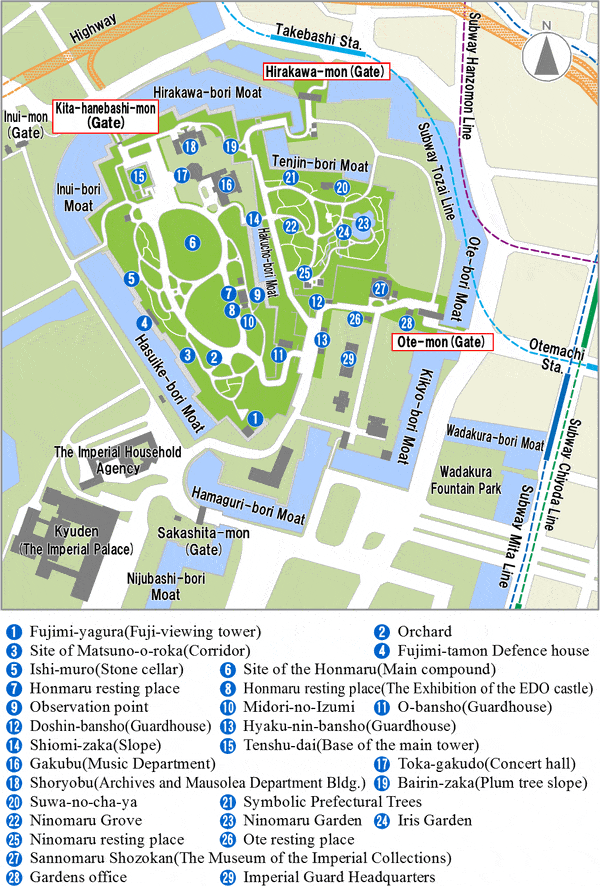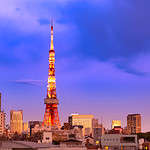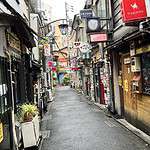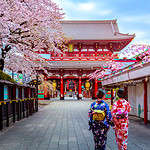If you’re planning to explore the cityscape of Tokyo and have an interest, in history a visit Imperial Palace Tokyo is a must. It’s not a tourist spot; it’s an expansive representation of Japans rich heritage, where every gate, building and garden holds its own unique story. So lets venture beyond the towering walls and delve into the chapters of history at the Tokyo Imperial Palace.
Contents
Walking Tour. Visit Imperial Palace Tokyo
Approaching the Otemon Gate one can’t. Sense the weight of history pressing against its wooden structure. This isn’t an entrance; it’s a gate that has welcomed countless influential figures throughout centuries.
Commencing our Journey at Otemon Gate
The imposing doors and stone walls resemble pages from a captivating history book, engraved with tales of shoguns and emperors. As you pass through envision the multitude of footsteps that have crossed this threshold. From samurai, to present day tourists.
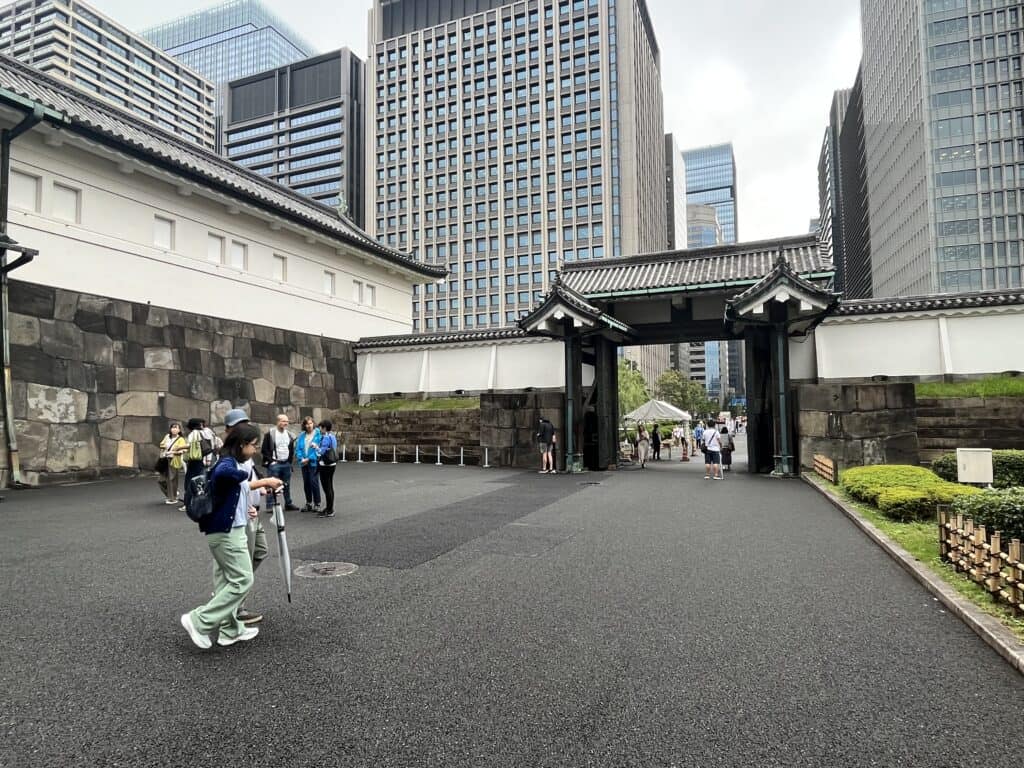 www.awesomeplacestovisit.com | CC BY 4.0
www.awesomeplacestovisit.com | CC BY 4.0Doshin Bansho Guardhouse: A Glimpse of Samurai Vigilance
A distance away, from the magnificent Otemon Gate stands the Doshin Bansho Guard House. This place served as the line of defense, where dedicated samurai guards remained watchful for any signs of trouble.
The guard house while unassuming was designed with both functionality and strategic advantage in mind. Its layout provided a vantage point to observe anyone approaching the gate. Today it remains tranquil—a testament to an era gone by. However if you let your imagination wander you can almost hear the echoes of footsteps and the hushed conversations among guards, on duty.
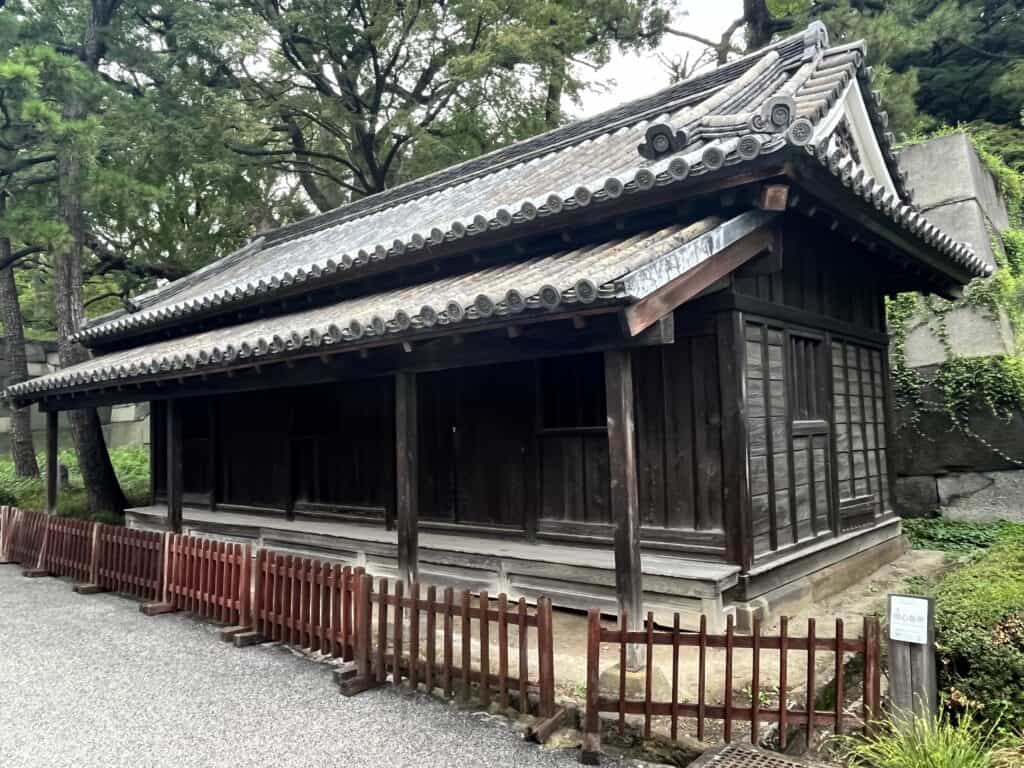 www.awesomeplacestovisit.com | CC BY 4.0
www.awesomeplacestovisit.com | CC BY 4.0Huakunin Bansho Guardhouse: The Hundred-Man Post
The Guardhouse of Huakunin Bansho serves as a reminder of the palaces formidable security force. While “Huakunin” translates to “eight hundred people” the guardhouse was not exactly staffed by a hundred individuals but a number of guards.
It is fascinating to contemplate the commotion that might have unfolded within these walls during an emergency with commands being issued and samurai preparing for action.
In times one can leisurely explore the tranquil structure, where the only instructions given may be directed towards a child joyfully playing on the palace grounds.
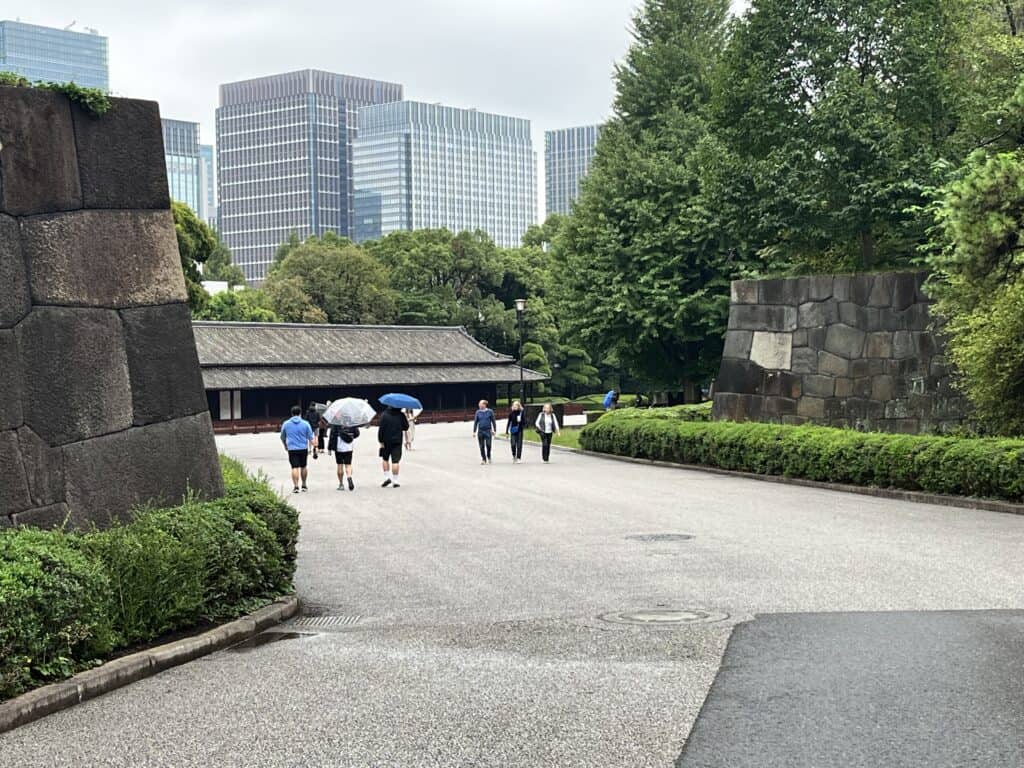 www.awesomeplacestovisit.com | CC BY 4.0
www.awesomeplacestovisit.com | CC BY 4.0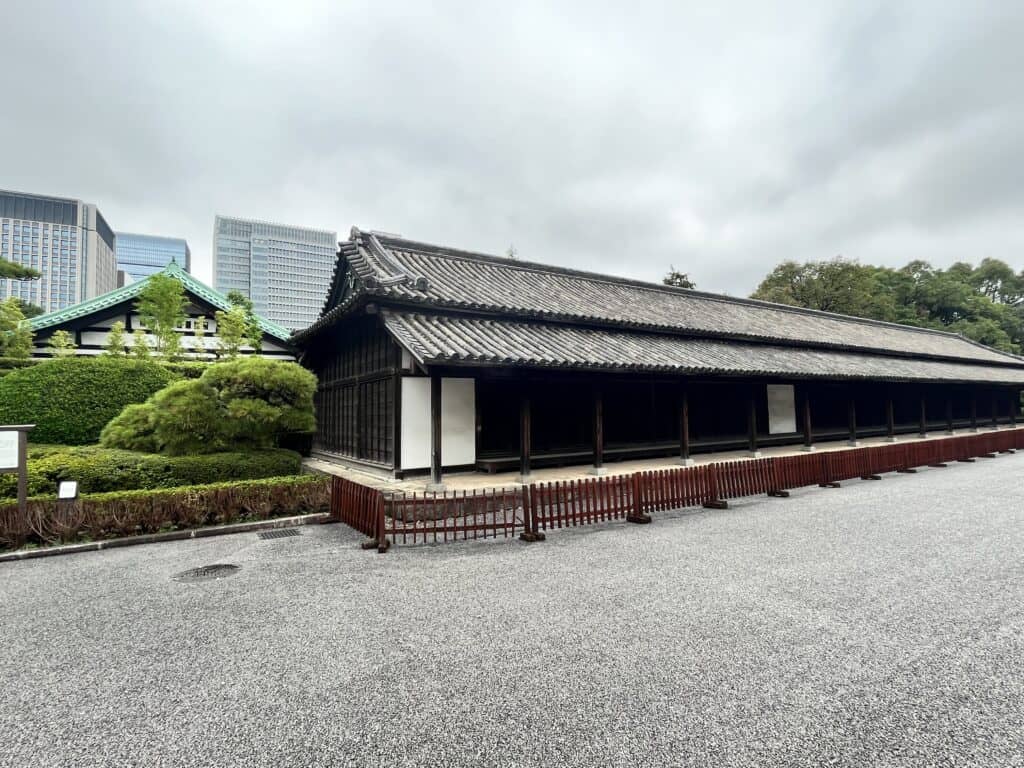 www.awesomeplacestovisit.com | CC BY 4.0
www.awesomeplacestovisit.com | CC BY 4.0Tenshudai: The Remnants of a Towering Past
As you approach the Tenshudai during you visit Imperial Palace you can’t be awed, by its height. This raised platform used to support the keep the centerpiece of the castle, which sadly no longer exists due to fires that occurred over time. However the foundation itself is remarkable, with massive stones fitted without any mortar.
When you stand on the Tenshudai you’ll find yourself elevated above the palace grounds. Close your eyes. Envision the five story castle that once graced this spot adorned with intricate rooftops and an imposing presence that dominated the skyline.
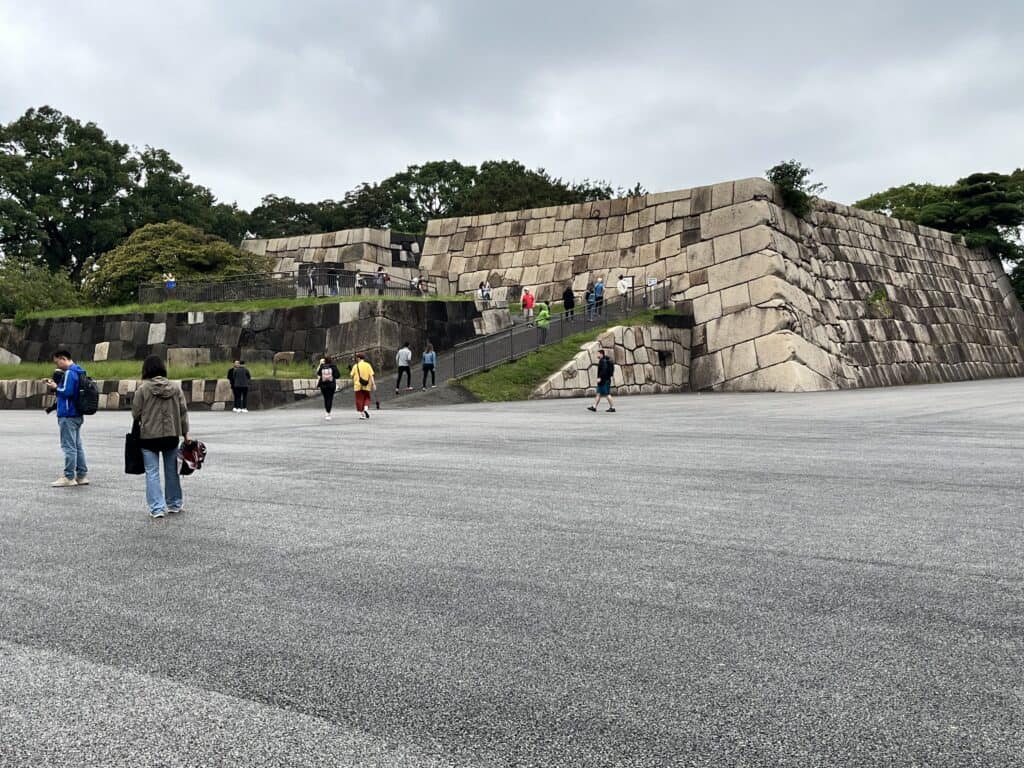 www.awesomeplacestovisit.com | CC BY 4.0
www.awesomeplacestovisit.com | CC BY 4.0Fuyimi Yagura: A Watchtower With a View
Fuyimi Yagura, one of the remaining towers provides a captivating glimpse, into the tactics employed during the Edo period. This particular watchtower played a role in safeguarding the castle utilizing its position to detect any approaching adversaries.
Now as you make your way up, to the summit you’ll be rewarded with a viewpoint to admire the palace grounds and more. Here there’s a feeling of seclusion, a serene tranquility that becomes somewhat eerie when juxtaposed with the bustling city just beyond the palace walls.
 www.awesomeplacestovisit.com | CC BY 4.0
www.awesomeplacestovisit.com | CC BY 4.0Bamboo Garden: A Whispering Retreat
Lets discuss the Bamboo Garden, a sanctuary where you can immerse yourself in the whispers of rustling leaves. It offers a tranquil escape, from the hustle and bustle of Tokyo with its tall and slender bamboo trees resembling guardians dressed in attire. The ambiance it creates is simultaneously. Slightly mysterious.
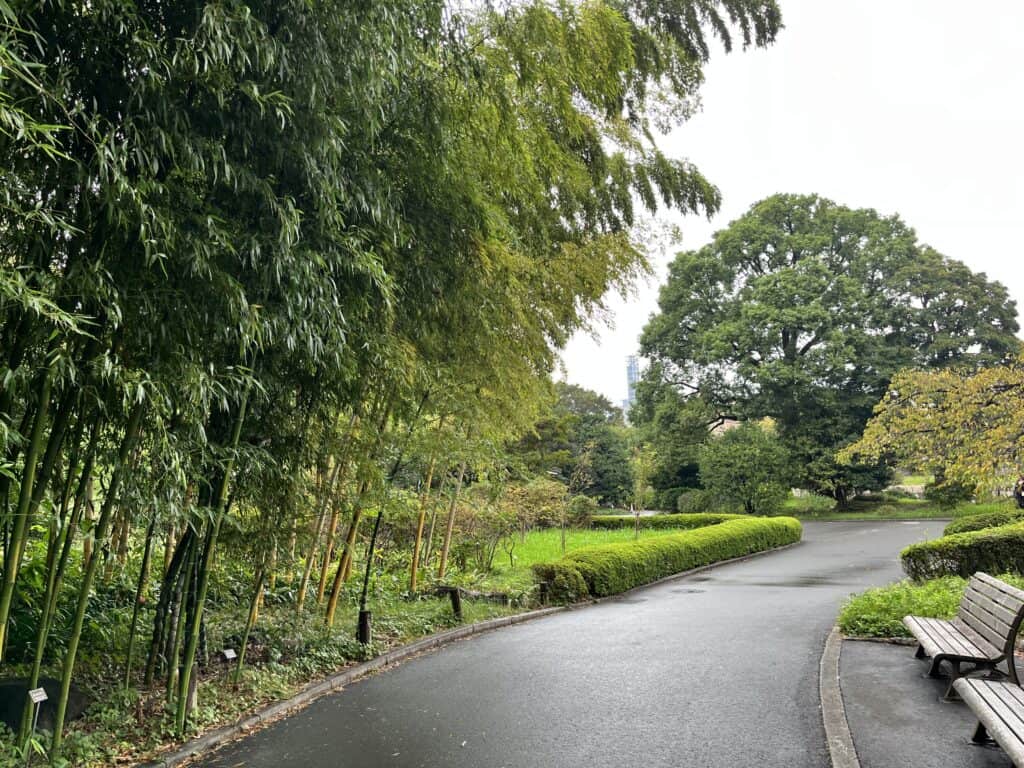 www.awesomeplacestovisit.com | CC BY 4.0
www.awesomeplacestovisit.com | CC BY 4.0A Haven of Various Trees: Living Monuments
As you stroll through the gardens it’s not the bamboo that catches your attention. When you visit the Imperial Palace prepare to be amazed, by the diversity on display. From trees that whisper secrets to ginkgoes adorned in vibrant autumnal yellows each tree adds its own unique touch to the story of the palace. They stand as living monuments steadfastly enduring through seasons and years.
Lets explore a few aspects:
Symbolism and History
- Pine Trees: Scattered across the palace grounds are pine trees (known as “matsu” in Japanese). In culture these pines symbolize longevity, good fortune and everlasting youth. They are commonly found in gardens and hold strong associations with New Year celebrations. The black pine trees, at the Imperial Palace receive pruning in the elegant ‘niwaki’ style, which enhances their beauty while representing resilience and endurance.
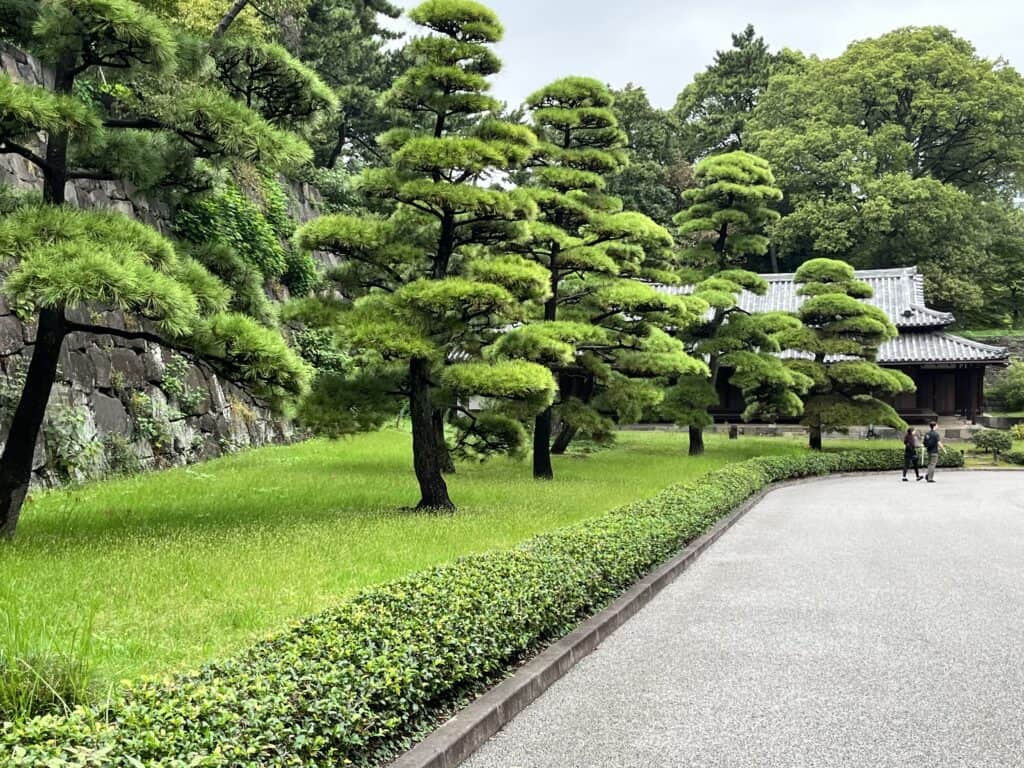 www.awesomeplacestovisit.com | CC BY 4.0
www.awesomeplacestovisit.com | CC BY 4.02. Cherry Trees: In culture cherry blossoms (known as sakura) hold a place symbolizing the transient beauty of life due, to their short blooming period. Within the palace grounds you can find cherry trees that steal the spotlight during hanami season (the time for cherry blossom viewing) attracting both locals and tourists who come to witness the breathtaking blooms.
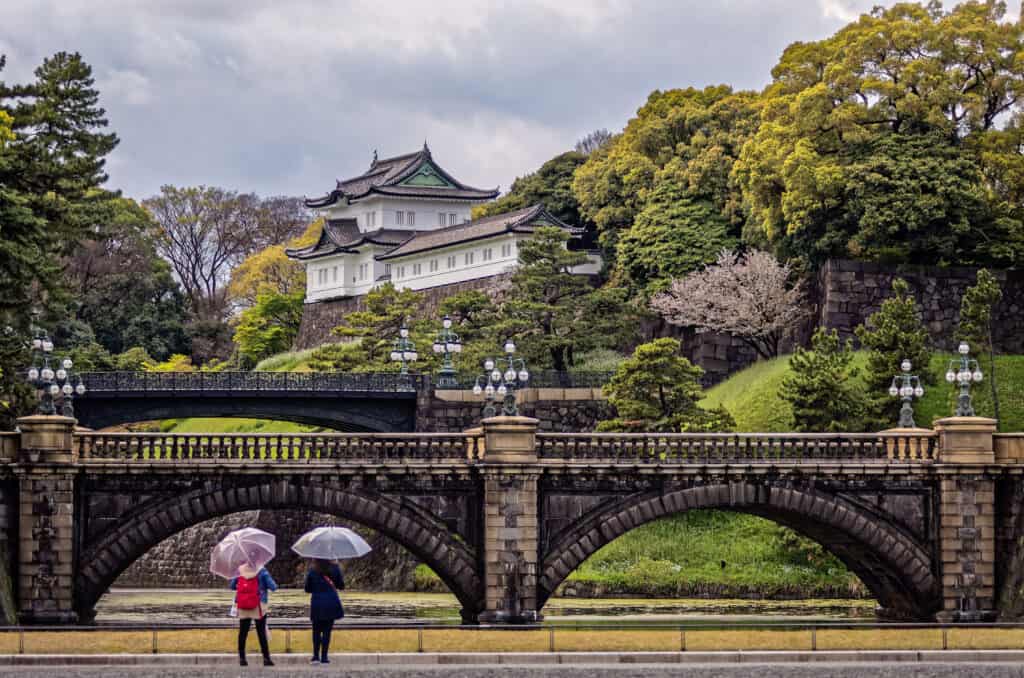 Guillermo Olaizola / Shutterstock.com
Guillermo Olaizola / Shutterstock.comEcological Significance
3. Ginkgo Trees: Recognizable by their fan shaped leaves that transform into a striking hue in autumn ginkgo trees have stood as “living fossils” for over 200 million years, virtually unchanged. The ginkgoes residing within the Imperial Palace stand as testaments to resilience and history silently observing seasons and eras as they pass.
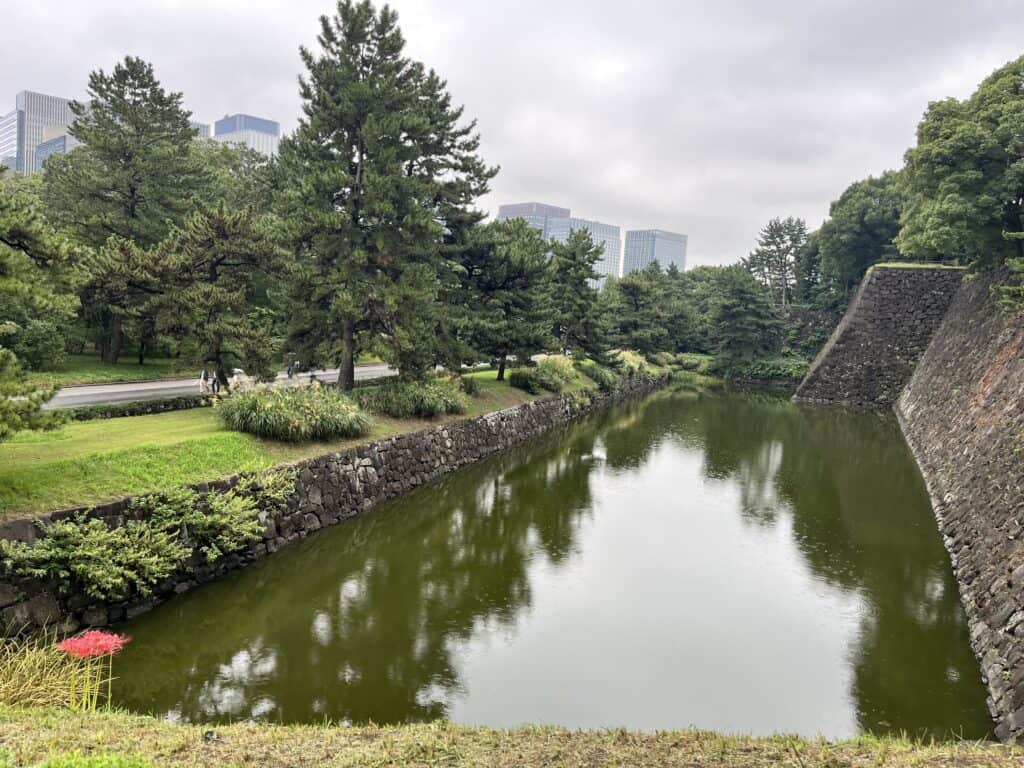 www.awesomeplacestovisit.com | CC BY 4.0
www.awesomeplacestovisit.com | CC BY 4.0Seasonal Beauty
4. Various Seasonal Trees: The palace grounds also encompass an array of tree varieties that contribute to the changing tapestry of each season. During autumn Japanese maple trees burst into shades of red and orange while plum trees blossom in winter—a beautiful sign heralding springs imminent arrival.
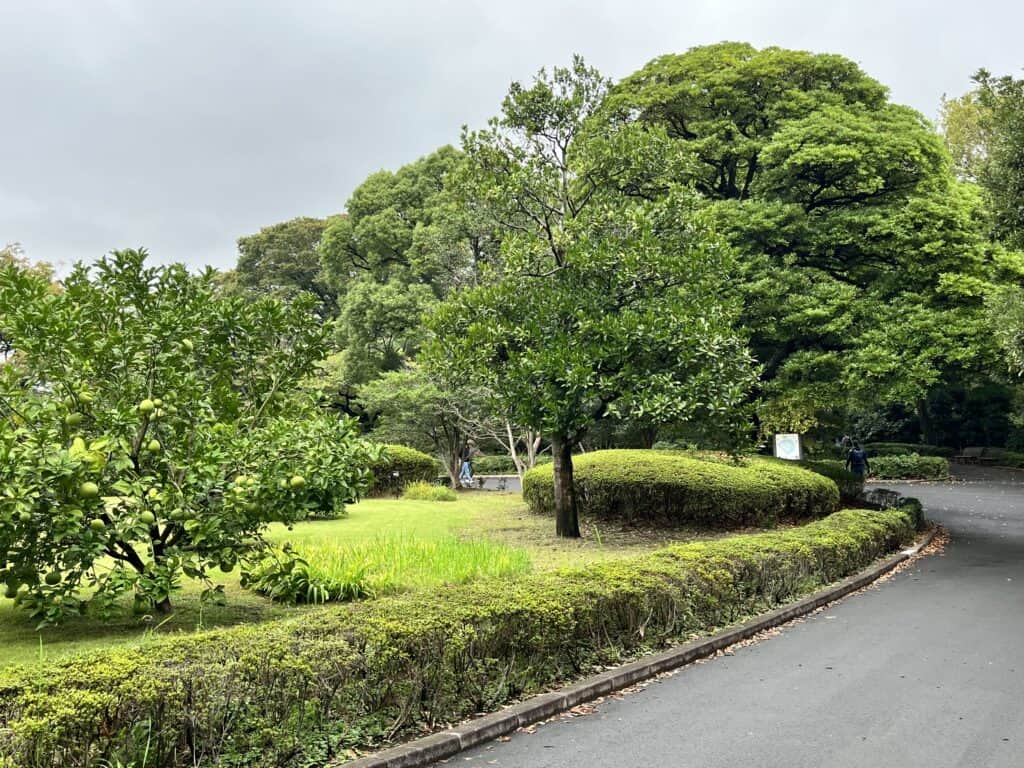 www.awesomeplacestovisit.com | CC BY 4.0
www.awesomeplacestovisit.com | CC BY 4.0Cultural Traditions
5. Endowed Trees: Amongst these majestic trees are some that hold significance as gifts symbolizing peace and friendship, between Japan and other nations. These trees represent not wonders but also serve as markers of Japans enduring international relationships.
6. Arrangement and Care: The way the trees are arranged and carefully taken care of reflects the belief, in living harmoniously with nature. The traditional techniques used to preserve these trees in gardens are considered an art form on their own deeply rooted in aesthetics, philosophy and spirituality.
The gardens here are not meticulously manicured to achieve perfection. Instead embrace a natural yet well maintained existence. This combination of nature and nurture seems to pay homage to the principle of ‘wabi sabi’ which appreciates beauty in imperfection and impermanence.
Map of Imperial Palace
Opening hours at Imperial Palace
Here’s the information about the opening hours at Imperial Palace Tokyo:
| Dates | Opening Hours | Last Entry Time |
|---|---|---|
| March 1 to April 14 | 9:00 a.m. – 5:00 p.m. | 4:30 p.m. |
| April 15 to August 31 | 9:00 a.m. – 6:00 p.m. | 5:30 p.m. |
| September 1 to 30 September | 9:00 a.m. – 5:00 p.m. | 4:30 p.m. |
| October 1 to 31 October | 9:00 a.m. – 4:30 p.m. | 4:00 p.m. |
| November 1 to end of February | 9:00 a.m. – 4:00 p.m. | 3:30 p.m. |
Overview of the opening hours at Imperial Palace for each period throughout the year, including the last possible entry time for visitors.
Concluding Your Visit to the Palace
As your visit to Tokyos Imperial Palace comes to an end take a moment to appreciate the moats cradling the palace. They beautifully mirror the sky, cityscape and surrounding trees, creating a backdrop for the palaces’ history. It’s difficult not to feel a connection, with the past before bidding farewell.
The Tokyo Imperial Palace itself tells its captivating story—a sprawling epic where every stone, tree and pathway holds significance. You don’t simply visit this palace; you engage with history, culture and nature on a level. So step through the Otemon Gate wander from guardhouse to guardhouse and allow yourself to be enveloped by the tranquility of its gardens.
This city is the soul of Tokyo filled with stories, from the past and murmurs, from the present.
Resources



